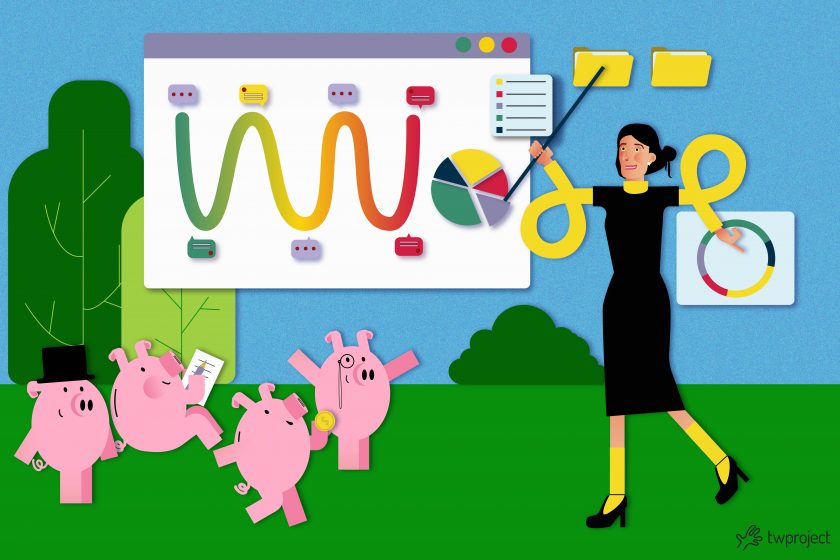Whether you are a rookie founder or a serial entrepreneur, a pitch deck is the key to successfully raising capital for a startup.
A well-structured pitch deck presents investors with a compelling narrative about a startup’s vision and plans, emphasizing the timeline and investment needs and explaining what makes the project successful.
This article will explain how to create a compelling pitch deck to captivate investors.
CONTENT
What is a Pitch Deck?
A pitch deck is a carefully crafted presentation that conveys a startup’s vision, business plan, key metrics, and other critical information to potential investors.
It is designed to provide a thorough overview of the business and highlight its potential and viability in the marketplace.
The main goal of a pitch deck is to engage investors, allowing the startup to raise the capital it needs to grow.
Regardless of the type of investor, there are some key elements that every early-stage startup should include in their pitch deck.
Founders should customize their pitches based on their target audience, although successful pitches for early-stage rounds generally include the following elements. Let’s examine them in the next section.
The key elements of developing an effective pitch deck
- A thrilling story
The pitch deck requires a captivating narrative that outlines the startup’s vision and future plans.
Right from the development stage, inspiring and thrill the audience is critical. The story can be engaging and relevant, showcasing why the company’s purpose is important and why the team is made up of the right people to achieve this vision.
The goal is to make investors willing to be part of that same journey and invest in the startup and the impact it aims to create.
The story must begin with a clear understanding of the problem you want to solve. Do not merely describe the situation: excite your audience.
Use real-life examples or anecdotes that prove how critical the problem is and how it affects real people or markets. Simon Sinek sums it up well in his “Golden Circle”: begin with the why before moving on to the how and what.
Example:
“ Every day, millions spend hours searching for information inefficiently, wasting valuable time. We asked ourselves, why should it be so difficult to find what we need in just a few seconds?”
- Visual Storytelling
Pitch deck is more than just content: it is also design.
The visual aspect is key in attracting attention and keeping the audience engaged.
Use a clean, consistent, and professional design. Do not clutter the slides with too much text or irrelevant images. Each visual element should emphasize the message you want to convey. High-quality infographics, graphics, and images can make your message clearer and more memorable.
Tools such as Canva or Figma can help create an eye-catching presentation without advanced design skills.
- An exceptional team
Having a first-class team is one of the most critical factors.
This is where it is crucial to establish credibility, show expertise, and build trust.
The pitch must highlight the team members’ relevant experience, unique skills, and past successes to show why they are the best people to achieve this vision.
- Numbers, KPIs, and Growth Outlook
Needless to say, a pitch deck requires numbers and KPIs. Each word needs to be related to key metrics that demonstrate traction.
Bringing actual numbers and data is critical for investors who expect a return on investment.
Yet those in the early stages and with limited or nonexistent data need to be transparent about it.
Investors do realize that early-stage startups may not yet have well-defined metrics. In this case, you can focus on presenting the product’s potential, the problem it solves, and the market opportunity.
Using qualitative data, pilot program results or user feedback can bring support to your statements.

- Clear and convincing Value Proposition
A successful pitch deck must make it unambiguously clear why your startup exists and what makes it unique.
A strong value proposition is not just a statement but the very essence of your project. It clearly outlines what problem your product or service solves, how it is different (and better) than the competition, and why users can’t do without it.
This section not only catches the attention of investors but also helps them immediately understand the startup’s impact and potential value. Use simple but powerful language and images or data supporting your message.
- Growth plan
Although your product is still under development, it is key to demonstrate a thorough understanding of the market, customers, and scalability.
A pitch deck must include a well-thought-out growth plan highlighting the strategy for reaching and expanding the customer base, penetrating the market, and scaling the business.
- Call to Action
Lastly, a pitch deck would not be complete without a call to action, which should be clear and concise.
As most founders seek to attract investment with their pitch deck, some simply want to expand their network, have their audience sign up for a trial version, or download their app.
If a startup is looking to raise money, it is crucial to be clear about the exact amount of funding and mention exactly what it will be used for. This will help determine realistic short-term, medium and long-term goals.
How important risk analysis and mitigation strategies are in the pitch deck
An element that is often underestimated in pitch decks is risk analysis and strategies for dealing with them.
Investors welcome founders who can demonstrate a realistic market view and potential obstacles. Including a section that identifies the project’s key risks, such as competition, market fluctuations, or technological limitations, and presenting well-crafted mitigation strategies can make all the difference.
This approach shows that the team is prepared to deal with challenges and builds investor confidence in the project’s solidity.
Project management tools, such as Twproject, can help manage risks by providing the means to constantly monitor them and adjust strategies in real time. This further proves a high level of organization and professionalism, which are key to winning investor support.
Gantt chart’s importance in a pitch deck
The Gantt chart is a key tool in a pitch deck, as it clearly and visually illustrates a project’s time schedule.
Its primary purpose is to provide a comprehensive overview of the development stages, highlighting key activities, crucial deadlines, and dependency relationships between the different steps.
This approach not only makes it easier for potential investors or partners to understand the action plan, but it also delivers a key message: the project team has a clear sense of direction, organization, and time management skills.
A well-structured Gantt chart is a powerful indicator of professionalism and preparedness, as it shows that the project is not just an abstract vision, but a concretely planned and realistic path.
The Gantt chart becomes a strategic tool in a competitive environment where details can often make the difference between an investor’s yes and no.
A powerful ally for creating clear and well-structured Gantt charts is Twproject, a project management software that offers intuitive tools for planning, monitoring, and managing complex projects.
With Twproject, you can create Gantt charts in just a few clicks, customizing them according to your specific project needs and keeping them updated in real-time.
Built-in features make managing dependencies between activities easy, allocating resources efficiently, and adjusting scheduling in case of unexpected events.

With Twproject, the Gantt chart in the pitch deck is not just a visual representation but becomes a strategic communication element that strengthens the startup’s credibility before investors’ eyes.
Tools like this are also helpful for startups that want to develop their business model in an organized and realistic manner, particularly to impress their potential investors.

